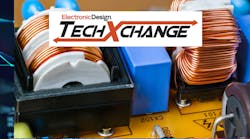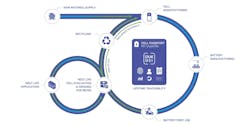What you’ll learn:
- Common misconceptions associated with EV batteries.
- How EVs are progressing to overcome perceived challenges.
- How the automotive and battery industries are working to increase sustainability.
- New innovations that will help to improve EV batteries and elevate their performance.
1. EV batteries are highly complex.
The notion that EV batteries are overwhelmingly complex stems from their early development stages and the raft of new battery cells and other systems surrounding them in cars, including battery-management systems (BMS). However, EV batteries have become less complex over time, and many of these components that were new to the automotive industry are now commonplace with proven reliability.
While batteries still represent a high level of engineering complexity, continuous technological progress is making them easier to design, use, and understand. Innovations in battery chemistry, manufacturing processes, and even fundamental changes in battery architecture are helping to remove complexity.
For example, Dukosi’s Cell Monitoring System reduces battery complexity by integrating a cell monitor chip on each cell, which directly monitors voltage and temperature. The data captured by the cell monitor is communicated to the host processor in the BMS over a wireless interface based on Dukosi’s proprietary C-SynQ communication protocol. Using a single bus antenna, this solution helps to simplify EV batteries by reducing wiring and components, resulting in 10X fewer components.
2. Battery modules are a fundamental part of EV design.
The belief that battery modules are an indispensable component of battery design is being reevaluated with the advent of next-generation architectures. Historically, battery systems have used modules as the basic component, assembling them into larger packs.
However, new cell-to-pack and cell-to-chassis designs are now challenging that traditional approach. Cells are integrated into the vehicle’s structure, leading to a boost in energy density, available space, and a noticeable reduction in weight and material consumption.
Dukosi’s chip-on-cell technology plays a pivotal role in enabling cell-to-pack and cell-to-chassis by eliminating the need for traditional battery modules. It provides a more flexible battery design at the cell level, allowing for a more efficient use of space and resources. This technology not only simplifies the manufacturing process, but also paves the way for more freely customizable battery configurations. It adapts to various vehicle platforms and requirements without needing expensive recertification.
3. EV batteries are inherently unsafe.
While EV batteries have been the subject of several high-profile and widely publicized cases of overheating, they’re not inherently unsafe. In fact, these incidents are rare thanks to the ever-improving designs used in modern EVs. These systems are designed to meticulously monitor the battery’s charge, temperature, and overall health, intervening to prevent conditions that could lead to safety issues.
>>Check out these TechXchanges for similar articles and videos
The safety of EV batteries has been further improved through lessons learned from vehicle impacts and battery failures, leading to advances such as smart fuses and fault-isolating internal structures as well as durable casing materials. These measures, coupled with stringent testing and certification processes, ensure that EV batteries meet high functional-safety standards before they hit the market.
Improving monitoring can also help to increase safety. For example, by adopting cell-level monitoring systems, you can introduce a temperature sensor to every cell instead of only one per several cells. Then, if an individual cell is damaged or has a defect that causes its temperature to increase abnormally, it can be identified much more quickly.
4. EV batteries have short lifespans.
Thanks to advances in technology and better understanding of cell performance, the longevity of EV batteries has improved with each generation. Today’s EV batteries are built to last, with many manufacturer warranties lasting as long as a decade, underlining their confidence in the technology.
Continuous improvements in chemistry and BMS have resulted in enhanced battery life, allowing these systems to maintain their charge capacity over many years and miles of usage.
Dukosi directly captures voltage and temperature data from every cell and then processes all of the data as close to the source as possible. The data can be used to maximize battery performance during use, while accurate and continuous monitoring at a cell level helps to identify trends and potential issues early for preventative maintenance. This extends the battery’s lifespan and ensures more reliable performance throughout its use.
5. EV batteries are hard to recycle.
Sustainability is a major concern with EV batteries. But the EU Battery Passport and other new regulations aim to address this issue. Improving the traceability of batteries, especially at the cell level, can help us to promote a more sustainable circular economy.
When an EV reaches the end of its life, cell “passports” can help engineers identify which batteries can still be repurposed for applications like energy storage from the grid or renewable sources that accommodate lower peak performance compared to vehicle usage.
Having a better understanding of the cell's history, state of health (SOH), and chemical composition also helps reduce waste and promotes safer and more responsible recycling practices when the batteries reach the end-of-life (EOL) stage. As a result, we’re able to better recycle the valuable resources locked within EV cells, ensuring they’re reused.
6. Wireless BMS are too unreliable.
While a wireless BMS offers design flexibility and improves reliability by eliminating complex wiring, it can introduce new challenges. The issues include ensuring signal propagation through the metal battery packs and preventing RF interference caused by high-power cabling from interrupting wireless communication to the host MCU. The chip-on-cell solution developed by Dukosi aims to combine the benefits of wired and wireless systems, without as many of their drawbacks.
Unlike far-field wireless communication, the signals in Dukosi’s near-field contactless architecture only travel a short distance between the cell monitor chip and the overhead bus antenna. Near-field communication offers increased reliability compared to far-field solutions, and the company’s proprietary communication protocol guarantees synchronized data transfer, even in challenging RF environments.
Dukosi’s Cell Monitoring System has been built from the ground up to meet the rigors of EV battery deployments, and its C-SynQ protocol helps ensure more reliable communication.
7. A wireless BMS is a security nightmare.
Advances in communication protocols and architectures are showing that wireless communication in batteries can mitigate security risks. Although legitimate concerns exist about cybersecurity when implementing wireless communication in vehicle systems, there are effective safeguards to prevent unauthorized access and data breaches.
By using secure and encrypted communication protocols, data access can be effectively limited. However, by simply limiting the propagation of wireless signals to just a several centimeters, it can effectively eliminate any security risk. Short of physically disassembling the battery, hackers will not have many opportunities to intercept the signals.
8. Battery state of health (SOH) is difficult to calculate and retain.
Usually, SOH information is lost once a battery is decommissioned, leading to time-intensive and costly evaluations if the pack is to be reused or recycled. Furthermore, SOH is frequently measured at the pack- or module-level of the battery, which can mask problems occurring in individual cells.
Dukosi’s chip-on-cell technology overcomes these challenges by storing detailed data about each cell’s history on the cells themselves, providing a high level of traceability. This innovation streamlines the assessment of the SOH, reducing costs and risks, improving battery lifecycle management, and promoting sustainable reuse and recycling.
9. Battery packs are too expensive.
Battery packs are often the most expensive component of an electric vehicle, tasking automotive OEMs with reducing their cost. While costs will continue to come down as battery designs and processes are optimized, shifts in technology can also significantly reduce the bill-of-material (BOM) costs. Dukosi’s chip-on-cell technology cuts component count, reduces the BOM, and simplifies battery architecture, leading to lower manufacturing and design costs.
Furthermore, the technology helps with the total cost of ownership (TCO), reducing costs across battery-enabled industries. By monitoring individual cells, it becomes possible to optimize energy usage in battery packs, potentially leading to a decrease in required capacity, lowering build costs. On top of that, cell-level passports not only create better opportunities for second-life use of batteries, but also enable more effective recycling, which will help to reduce raw material costs.
10. EV battery shipping is too costly.
Safety regulations make shipping lithium-ion (Li-ion) batteries expensive, especially when the SOH is unknown. When a cell is removed from its original battery, its SOH status is lost and thus must be treated as potentially hazardous.
However, new regulations, such as the EU Battery Passport, help to quell these concerns. A battery passport is a digital record of the battery’s history and SOH, which improves safety and transparency in shipping and handling. The information it provides can lower insurance and shipping expenses by providing an accurate assessment of the battery’s condition during transportation, mitigating unforeseen risks.
By integrating cell-level monitoring, you’re able to enhance this insight further, providing data for each individual cell, rather than just the module or pack. This ensures that cells can be removed from a pack, more accurately assessed, and shipped with confidence.
11. Battery manufacturing is difficult to automate.
EV batteries are inherently hard to assemble, being a high-power device that also needs to integrate countless wires and sensors, all while being packaged in the tightest dimension possible. Historically, this has hindered automation with complex wiring looms being fitted manually, which limits assembly line speed and cost-effectiveness. However, new battery architectures such as contactless cell monitoring simplify the process by replacing complex wiring with a simple, single-antenna design.
>>Check out these TechXchanges for similar articles and videos
About the Author

Joseph Notaro
Vice President, Global Sales and Marketing, Dukosi
Joseph Notaro is an accomplished technology industry executive with over 30 years of leadership experience in semiconductors and the automotive sector. Throughout his career, he’s led business and market development, strategy, R&D, and worldwide sales organizations, with international experience spanning across the Americas, Asia Pacific, and Europe.
Before joining Dukosi, he held various management and executive positions at STMicroelectronics, Fairchild, and onsemi. Most recently, he led the sales, business development, marketing, and customer success groups at Baraja, a LiDAR technology company, where he engaged with OEMs, Tier-1 suppliers, and ecosystem partners.




